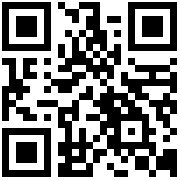Pliers can be divided into: torsion type; shear type; torsion shear type. According to the type, it can be divided into: hydraulic pliers; crimping pliers; hydraulic wire pliers; wire stripping pliers; rechargeable hydraulic cable pliers. According to the shape, it can be divided into: pointed mouth; flat mouth; round mouth; curved mouth; oblique mouth; needle mouth; top cutting; wire cutters; flower gill pliers, etc. According to the use, it can be divided into: DIY, industrial pliers, special pliers, etc. According to the structure, it is divided into two types: piercing gills and stacking gills. Usually the specifications are: 4.5" (mini pliers), 5", 6", 7", 8", 9.5" and so on.
Kategori prensipal yo se jan sa a:
1. Kouto fil
Yon kouto fil se yon kranpon ak zouti koupe ki gen fòm yo montre nan Figi 1 sou bò dwat la.
The wire pliers are composed of a pliers head and a pliers handle, and the pliers head includes a jaw, a toothed edge, a knife edge, and a guillotine opening. The functions of each part of the pliers are: ① the tooth opening can be used to tighten or loosen the nut; ② the knife edge can be used to cut the rubber or plastic insulating layer of the flexible wire, and can also be used to cut the wire and iron wire; ③ the guillotine can be used to Cut off hard metal wires such as wires and steel wires; ④ The insulating plastic tube of the pliers can withstand a voltage of more than 500V, and with it, the wires can be cut with electricity. During use, do not throw it away. So as not to damage the insulating plastic pipe. The wire cutters commonly used by electricians have various specifications such as 150mm, 175mm, 200mm and 250mm.
2. pens nen zegwi
Needle-nose pliers, also known as trimmers, are mainly used for cutting single-strand and multi-strand wires with thin wire diameters, as well as bending single-strand wire joints, stripping plastic insulation, etc. It is also an electrician (especially an internal electrician) One of the commonly used tools. It is composed of a pointed tip, a knife edge and a pliers handle. The handle of the electrician's needle-nose pliers is covered with an insulating sleeve with a rated voltage of 500V. Needle-nose pliers have a sharper head, so it is necessary to use needle-nose pliers for operations in small spaces. The operation method of using needle-nose pliers to bend the wire connector is to fold the end of the wire to the left, and then bend it to the right in a clockwise direction against the screw.
3. fil retire rad sou ou
Dezabiye fil elektrik la se youn nan zouti elektrisyen yo, reparatè motè yo ak elektrisyen instrumentation yo souvan itilize. Aparans li yo montre nan Figi 2. Li konpoze de yon kwen kouto, yon pò crimping ak yon manch pens. Manch dezabiye fil la kouvri ak yon manch izolasyon ak yon vòltaj k ap travay rated nan 500V.
Stripper fil la apwopriye pou retire plastik ak kawotchou izole fil ak fil nwayo kab.
4. Kle tiyo
Pou fixation oswa demantèlman divès kalite tiyo, Pwodwi pou Telefòn tiyo oswa pati wonn. Zouti komen pou enstalasyon ak reparasyon nan tiyo. Enkruste li yo ka fèt pa Distribisyon pèrmeabl. Yon lòt alyaj aliminyòm, ki karakterize pa pwa limyè, fasil yo sèvi ak, pa fasil rouye.
5. Offset pens
Offset pliers are sometimes also called diagonal pliers. When cutting the wires, especially when cutting off the excess wire ends after the wires are wound on the solder joints and the long leads after the plug-ins are placed on the printed circuit board, it is best to use the tool with offset pliers. Offset pliers are also often used to cut insulating sleeves, nylon cable ties, etc. instead of general scissors. Offset pliers with a length of 160mm and a plastic insulating handle are most commonly used.
TSTOP ak SOM mak zouti ak itilizatè mache nan plis pase 120 peyi ak rejyon atravè mond lan, volim ekspòtasyon anyèl la se 200 milyon dola ameriken.
QR kòd
